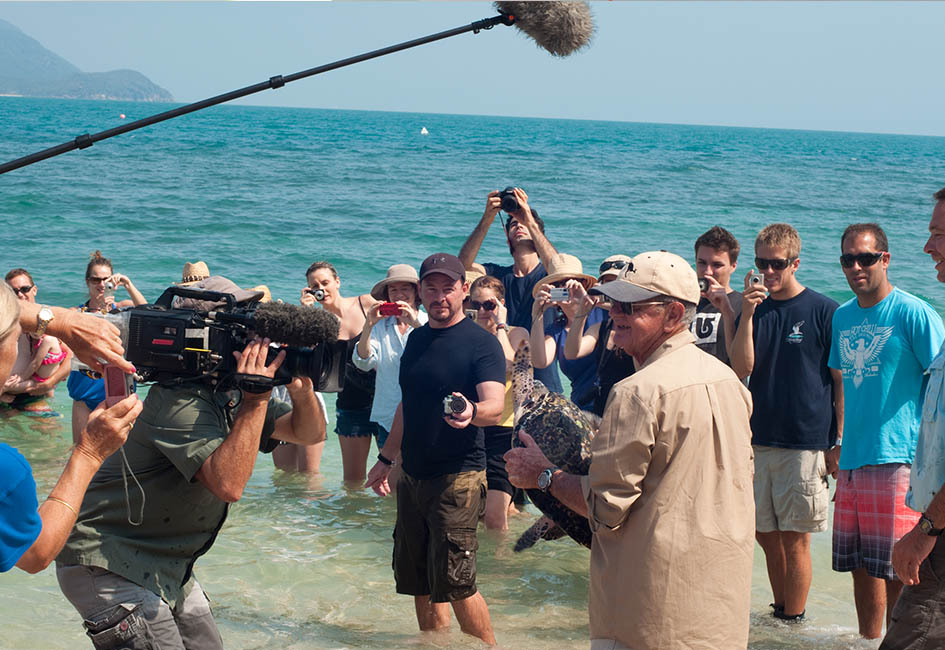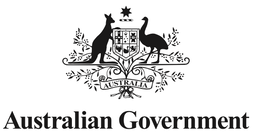About Cairns Turtle Rehabilitation Centre
Cairns Turtle Rehabilitation Centre (CTRC) is a non-profit voluntary organisation dedicated to the rehabilitation of sick and injured turtles.
The Great Barrier Reef is home to six of the world’s seven species of marine turtles. A number of these are seriously threatened by a diverse range of natural and, more significantly, human induced factors. Our rehabilitation facilities are located in Cairns - Far North Queensland, which is where many of the sick and injured turtles that we care for are found .
CTRC supports the work of all organisations, individuals and agencies in their efforts to conserve sea turtles and the habitats that they live in. We work closely with a number of these groups, which includes the environmental Protection Agency (EPA) and EPA National Park Rangers who are responsible for bringing the turtles to us.
CTRC relies on the generous donations from supporters and volunteers, without whom we would be unable to continue this important work. Here at CTRC we are always looking for new ways to work with other parties, so that our combined efforts are not only focused but maximised for the overall benefit of sea turtle conservation.
The Great Barrier Reef is home to six of the world’s seven species of marine turtles. A number of these are seriously threatened by a diverse range of natural and, more significantly, human induced factors. Our rehabilitation facilities are located in Cairns - Far North Queensland, which is where many of the sick and injured turtles that we care for are found .
CTRC supports the work of all organisations, individuals and agencies in their efforts to conserve sea turtles and the habitats that they live in. We work closely with a number of these groups, which includes the environmental Protection Agency (EPA) and EPA National Park Rangers who are responsible for bringing the turtles to us.
CTRC relies on the generous donations from supporters and volunteers, without whom we would be unable to continue this important work. Here at CTRC we are always looking for new ways to work with other parties, so that our combined efforts are not only focused but maximised for the overall benefit of sea turtle conservation.
Our Mission
Our Mission"Protecting and promoting the conservation of marine turtles"
Here at CTRC our mission serves as the guiding principle and therefore underpins the aims and objectives of our organisation. Our aims and objectives include the following;
Here at CTRC our mission serves as the guiding principle and therefore underpins the aims and objectives of our organisation. Our aims and objectives include the following;
- Do all that we can to rehabilitate sick and injured turtles in our care
- Endeavor to provide assistance, where required or requested, in efforts to rescue turtles in distress
- Share our knowledge in the interests of turtle rescue, rehabilitation and research
- Endeavor to raise awareness of issues faced by marine turtles through positive publicity and teaching
- Help to promote humane and sustainable practices through co-operation and education
- Seek to positively influence Government Policy relating to turtle conservation and the marine environment
What we do
At CTRC our primary role is to treat and rehabilitate sick and injured Marine Turtles, which we do with significant support from the Marlin Coast Veterinary Surgery. Within this context we specialise in the following areas;
|
Species Treated
Life Stages Treated |
Conditions Treated
Areas of Expertise
|
Why Is The Rehab Team So Passionate About Turtles?
The team at the Centre regularly give up their time and resources to ensure sick and injured turtles can be safely returned to the wild. The factors that drive each individual team member to get involved may be simple or complex, but in the end it all comes down to a shared common interest and fascination for one of the oceans most endearing characters…. the marine turtle.
As morning dawns across Far North Queensland, it is amazing to think that turtle tracks left on the beach by last night’s visitors could have been found on similar shorelines 150 Million years ago.
Far North Queensland is a magical place. Still protected by its remoteness it exhibits many of nature’s wonders and remains largely untouched by the expansion of civilisation and our insatiable demand for more of everything.
Populations of species evolve towards adaptions that offer the greatest advantages for local environmental conditions. The survival of the turtle species we see today is a testament to their ability to adapt and thrive whilst the earth continues to change and alter the biodiversity that exists around them. Typically changes are small and incremental, allowing species time to adjust to new habitats and optimise survival chances. But the ability of man to speed up change is truly phenomenal and unfortunately this change often fails to consider the rate at which nature can adapt and cope.
So in the eyes of the Turtle what does this mean? Well the odds of surviving 30 years to breed in a rapidly changing ocean environment are worsening. Increased and poor fishing practices not only impact food sources but take the lives of many unsuspecting turtles each year. Manmade marine debris can trap and drown turtles and worse still, if ingested, subject them to a slow and painful death. Then there is global warming.... warmer nests mean that fewer male turtles will be produced from existing nesting sites, indeed, many of these sites will disappear altogether if sea levels continue to rise.
Why are we so passionate about turtles? For us the answer is simple; every healthy turtle we return to the ocean provides a ray of hope - not only for the turtle breeding population but also for the lessons that we learn throughout their treatment and rehabilitation. Lessons that can be used to successfully treat other turtles and can be shared with other organisations so that they and the turtles they treat may also benefit.
As morning dawns across Far North Queensland, it is amazing to think that turtle tracks left on the beach by last night’s visitors could have been found on similar shorelines 150 Million years ago.
Far North Queensland is a magical place. Still protected by its remoteness it exhibits many of nature’s wonders and remains largely untouched by the expansion of civilisation and our insatiable demand for more of everything.
Populations of species evolve towards adaptions that offer the greatest advantages for local environmental conditions. The survival of the turtle species we see today is a testament to their ability to adapt and thrive whilst the earth continues to change and alter the biodiversity that exists around them. Typically changes are small and incremental, allowing species time to adjust to new habitats and optimise survival chances. But the ability of man to speed up change is truly phenomenal and unfortunately this change often fails to consider the rate at which nature can adapt and cope.
So in the eyes of the Turtle what does this mean? Well the odds of surviving 30 years to breed in a rapidly changing ocean environment are worsening. Increased and poor fishing practices not only impact food sources but take the lives of many unsuspecting turtles each year. Manmade marine debris can trap and drown turtles and worse still, if ingested, subject them to a slow and painful death. Then there is global warming.... warmer nests mean that fewer male turtles will be produced from existing nesting sites, indeed, many of these sites will disappear altogether if sea levels continue to rise.
Why are we so passionate about turtles? For us the answer is simple; every healthy turtle we return to the ocean provides a ray of hope - not only for the turtle breeding population but also for the lessons that we learn throughout their treatment and rehabilitation. Lessons that can be used to successfully treat other turtles and can be shared with other organisations so that they and the turtles they treat may also benefit.
Our Supporters
Without the support of Businesses, other organisations and passionate people we would not be able to do what we do. Here are some of our long term supporters that deserve a mention. Please contact us if you want to help us to save Sea Turtles.
All photos provided by Christian Miller - if you have queries about imagery please send him an email here |



































